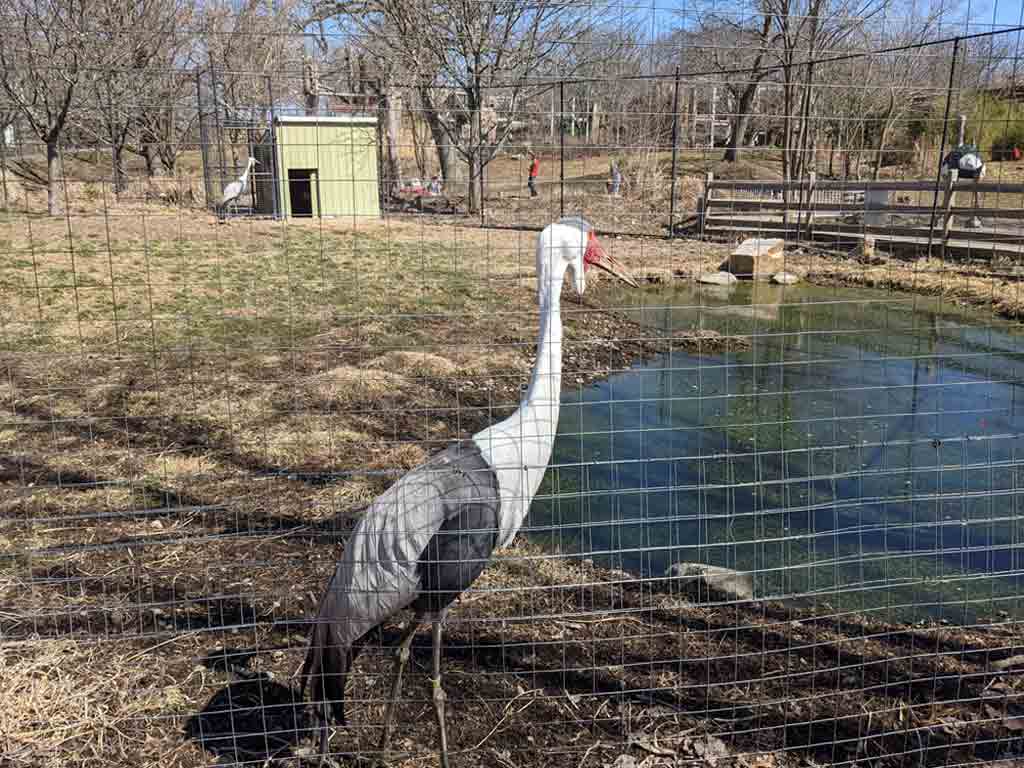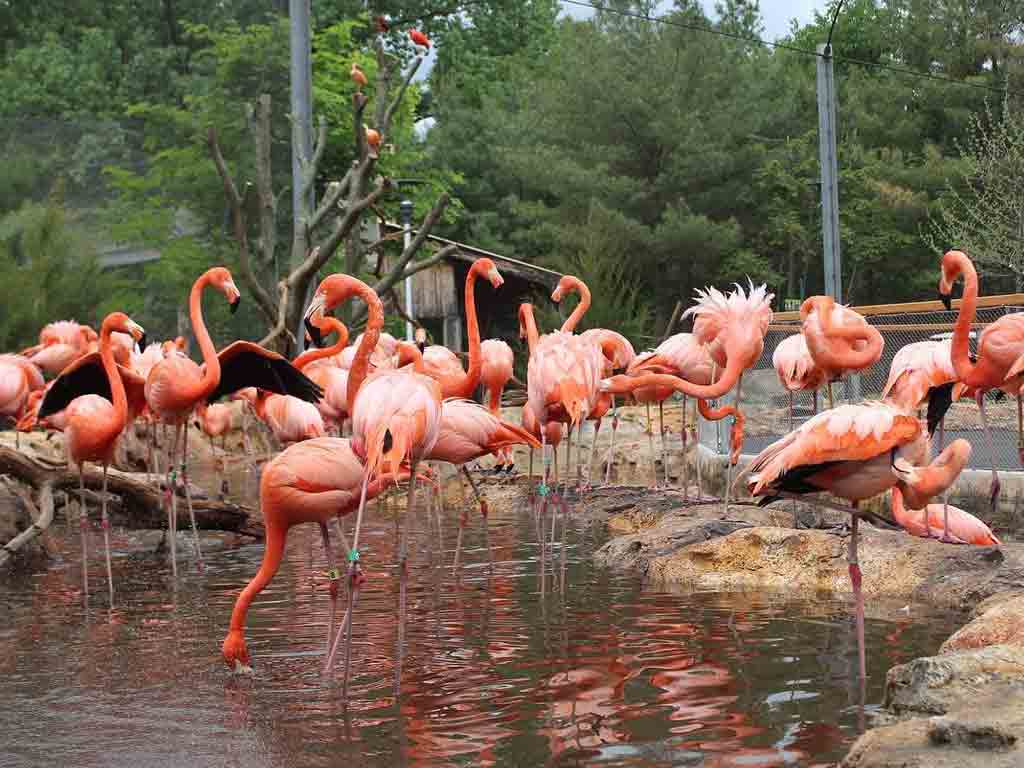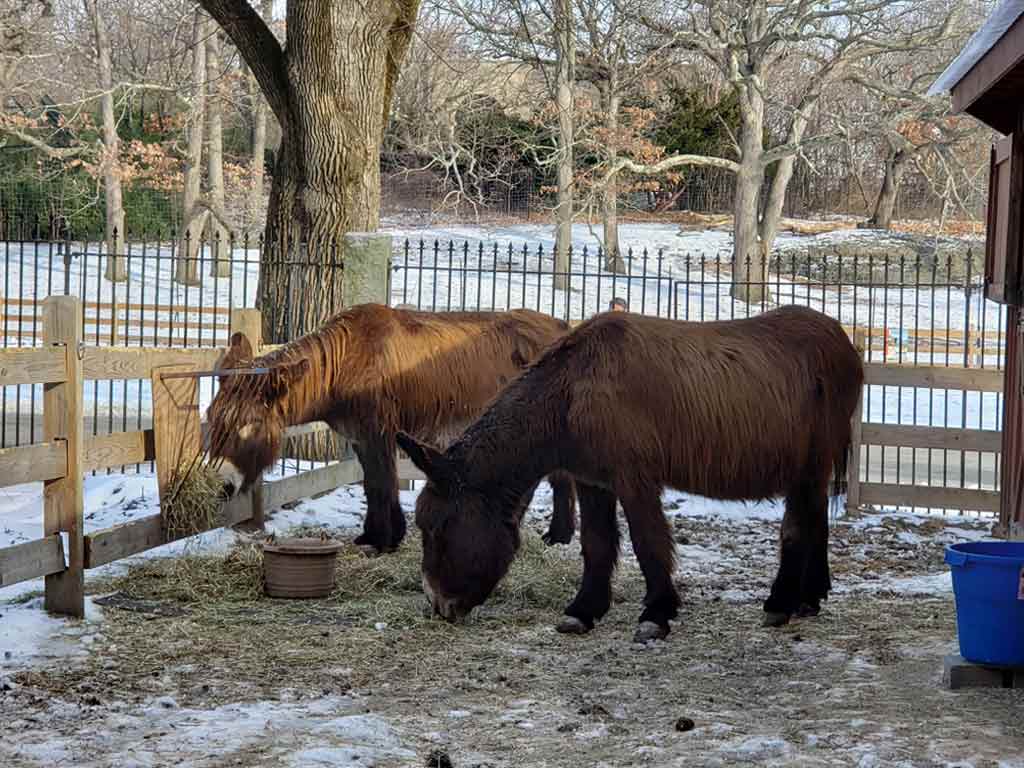Franklin Park Zoo, nestled in the vibrant heart of Boston, Massachusetts, is a captivating haven for wildlife enthusiasts and families.
This 72-acre zoological gem, operated by Zoo New England, beckons visitors with a resounding answer to the question of where to find an immersive and educational experience with diverse animal life.
Established in 1912, Franklin Park Zoo has evolved into a dynamic institution, seamlessly blending entertainment, conservation, and community engagement.
Home to many species worldwide, the zoo’s exhibits transport visitors to the far reaches of the globe, from the lush Tropical Forest to the sweeping Serengeti Crossing.
Beyond its impressive collection of animals, the zoo distinguishes itself through a commitment to conservation initiatives, breeding programs for endangered species, and educational outreach that seeks to instill a profound understanding of the delicate balance of ecosystems.
In this exploration of Franklin Park Zoo, we delve into its history and the myriad reasons why it stands as a beloved destination for those seeking an enriching journey into the wonders of the natural world. Stay focused.
Is Franklin Park Zoo A Good Place to Visit?
Yes, Franklin Park Zoo in Boston, Massachusetts, is generally considered a good place to visit. Spanning 72 acres, the zoo offers a diverse and engaging experience for visitors of all ages.
Operated by Zoo New England, which also manages the Stone Zoo in Stoneham, Massachusetts, Franklin Park Zoo is home to various animals worldwide.
The zoo focuses on conservation and education, providing informative exhibits and interactive displays that aim to raise awareness about wildlife and their habitats.
Visitors can explore different habitats, including the Tropical Forest, Serengeti Crossing, and the Aussie Aviary.
The Franklin Park Zoo also hosts various events and educational programs throughout the year, making it a family-friendly destination that combines entertainment with learning about the importance of wildlife conservation.
It’s a recommended destination for those interested in exploring and appreciating the animal kingdom.
History of Franklin Park Zoo

Founded in 1912, the Franklin Park Zoo in Boston, Massachusetts, has a rich history as a prominent institution dedicated to wildlife conservation and education.
Spanning over a century, the zoo has undergone significant transformations, evolving into a multifaceted space that showcases a diverse range of species and serves as a hub for fostering awareness about the importance of preserving our planet’s biodiversity.
Inception and Early Years
Franklin Park Zoo began as an initiative to create a place where both residents and visitors could connect with nature and experience the wonders of the animal kingdom.
Established in 1912, it quickly became a beloved destination, featuring a modest collection of wildlife and serving as a focal point for community engagement with nature.
Architectural Evolution
Over the years, the zoo has witnessed architectural expansions and improvements to enhance both visitor experience and animal welfare.
The development of innovative exhibits and enclosures has allowed the zoo to provide a more natural and enriching environment for its inhabitants while also creating immersive experiences for visitors.
Conservation Initiatives
Franklin Park Zoo has consistently been at the forefront of conservation efforts, participating in breeding programs for endangered species and collaborating with global conservation organizations.
These initiatives aim to preserve endangered species and contribute to the broader understanding of wildlife and ecosystem dynamics.
Educational Outreach

Recognizing its crucial role in educating the public, the zoo has developed comprehensive educational programs.
These programs cater to diverse audiences, from school groups to families, providing valuable insights into the importance of wildlife conservation and the interconnectedness of all living beings.
Community Engagement and Events
Beyond its role as a traditional zoo, Franklin Park Zoo actively engages with the community through events, workshops, and interactive exhibits.
These endeavors foster a sense of responsibility and appreciation for nature, encouraging visitors to become advocates for wildlife preservation.
Sustainable Practices
In alignment with contemporary conservation principles, the zoo has embraced sustainable practices.
These include eco-friendly construction methods and waste reduction initiatives, reflecting a commitment to minimizing its environmental footprint and setting an example for responsible wildlife management.
The history of Franklin Park Zoo is a testament to its enduring commitment to wildlife conservation, education, and community engagement.
How to Reach Franklin Park Zoo?
Nestled in the heart of Boston, Massachusetts, Franklin Park Zoo awaits eager visitors with its diverse wildlife exhibits and immersive experiences.
While situated in a bustling city, reaching this zoological gem is a straightforward and accessible journey. Here’s a detailed guide on how to reach Franklin Park Zoo:
By Car

The most convenient way to reach Franklin Park Zoo is by car. The zoo is easily accessible from major highways, including I-93 and I-95.
Visitors can use GPS navigation systems by entering the zoo’s address, 1 Franklin Park Rd, Boston, MA 02121, for accurate directions.
Ample parking facilities are available on-site, providing a hassle-free option for those driving.
Public Transportation

Franklin Park Zoo is well-connected to Boston’s public transportation network. Visitors can use the MBTA (Massachusetts Bay Transportation Authority) buses or trains to reach the Franklin Park area.
The bus routes 16 and 19 have stops near the zoo, making it a convenient option for those who prefer public transit.
Walking
Located within the sprawling Franklin Park, the zoo is accessible by foot for those in the nearby neighborhoods.
Visitors can explore the park’s scenic trails and arrive at the zoo entrance on foot. Walking offers a leisurely approach, allowing visitors to appreciate the beauty of the surrounding greenery.
Cycling

Cycling to Franklin Park Zoo is a viable option for the environmentally conscious and fitness enthusiasts.
The zoo is equipped with bike racks for secure bicycle parking. Riding through the picturesque Franklin Park, visitors can enjoy a scenic journey before immersing themselves in the diverse wildlife at the zoo.
Shuttle Service
Some local hotels and tourist services provide shuttle services to Franklin Park Zoo, ensuring that visitors can enjoy a stress-free trip without worrying about parking or navigating public transportation.
Inquire with your accommodation or local tourist services for information on available shuttle options.
Rideshare Services
Taking advantage of rideshare services such as Uber or Lyft is another convenient option for reaching Franklin Park Zoo.
Visitors can input the zoo’s address into their preferred rideshare app, and a driver will transport them directly to the entrance, offering a door-to-door experience.
Reaching Franklin Park Zoo is a seamless process with multiple transportation options catering to various preferences.
Why Franklin Park Zoo Is So Popular?
Franklin Park Zoo has garnered popularity for several reasons, making it a beloved destination for locals and tourists.
Here are some of the key factors contributing to the zoo’s widespread acclaim:
Diverse Animal Collection

One of the primary attractions of Franklin Park Zoo is its diverse and extensive collection of animals from around the world.
The zoo has various species, ranging from exotic mammals and birds to reptiles and amphibians.
This diversity offers visitors a rich and immersive experience, appealing to people of all ages and interests.
Conservation and Education Initiatives
Franklin Park Zoo has positioned itself as a wildlife conservation and education leader. The zoo actively participates in conservation programs, breeds endangered species, and collaborates with global organizations.
Its commitment to education is evident through informative exhibits, interactive displays, and educational programs, fostering an understanding of the importance of preserving biodiversity.
Engaging Exhibits and Enclosures
The zoo’s exhibits and enclosures are designed to be both educational and entertaining.
Thoughtfully crafted environments mimic natural habitats, providing a more enriching experience for both the animals and visitors.
Each exhibit offers a glimpse into the diverse ecosystems that animals call home, from the Tropical Forest to the Serengeti Crossing.
Community-Focused Events

Franklin Park Zoo actively engages with the community through various events and programs.
Whether it’s seasonal celebrations, special animal encounters, or educational workshops, the zoo creates a vibrant and inclusive atmosphere that encourages families, schools, and individuals to participate in various activities, fostering a sense of community.
Historical Significance
With a history dating back to its founding in 1912, Franklin Park Zoo holds a special place in the hearts of Bostonians.
The zoo has evolved over the years, adapting to changing times while maintaining its commitment to wildlife conservation.
Its longstanding presence and continuous efforts contribute to its cultural and historical significance in the community.
Beautiful Park Setting
The zoo benefits from a picturesque natural setting within the expansive Franklin Park. The park provides a lush and green environment, creating a pleasant visitor atmosphere.
The combination of well-designed exhibits and the park’s overall aesthetics enhances the overall experience, making a visit to the zoo both enjoyable and visually appealing.
Accessibility and Outreach
The zoo’s location in Boston, along with its accessibility by car, public transportation, and other means, contributes to its popularity.
Outreach efforts, such as collaborations with local businesses, hotels, and tourist services, make it easy for people to include Franklin Park Zoo in their travel plans, further boosting its popularity.
Franklin Park Zoo’s popularity stems from its commitment to conservation, diverse animal exhibits, educational initiatives, engaging events, historical significance, beautiful park setting, and accessibility.
What Is the Best Time to Visit Franklin Park Zoo?
The best time to visit Franklin Park Zoo can depend on various factors, including weather preferences, special events, and the types of animals visitors want to see.
However, here are some general considerations to help you plan the optimal visit:
Seasonal Considerations

The zoo is open year-round, but weather conditions can influence the overall experience.
The spring and fall months (April to June and September to November) typically offer mild temperatures, blooming vegetation, and pleasant conditions for outdoor exploration.
Summer (July and August) can be warm, making it an ideal time to enjoy the zoo’s outdoor spaces, while winter (December to February) may involve colder temperatures.
Weekdays vs. Weekends
If possible, consider visiting the zoo on weekdays. Weekdays generally have fewer visitors than weekends, providing a more relaxed and enjoyable experience.
This is particularly beneficial if you prefer a quieter atmosphere and shorter wait times for attractions.
Morning Hours
Right when the zoo opens, the early morning hours tend to be less crowded.
Animals are often more active during this time, and you can explore exhibits more easily. Morning visits also allow you to avoid the day’s heat during warmer seasons.
Avoiding Peak Hours
If visiting during weekends or peak seasons, try to arrive early or later in the afternoon to avoid the busiest times.
Many visitors prefer mid-morning to early afternoon, so planning your visit around these peak hours can help you navigate the zoo more comfortably.
Special Events and Programs
Check the zoo’s calendar for special events, exhibits, and programs. If you’re interested in a specific event or activity, planning your visit around these occasions can enhance your overall experience.
Conversely, if you prefer a quieter visit, you should check for major events that might attract larger crowds.
Weather Considerations
Consider the weather forecast when planning your visit. While the zoo has both indoor and outdoor exhibits, inclement weather may impact some outdoor attractions.
Dressing appropriately for the weather ensures a comfortable experience.
Off-Peak Seasons
If you prefer a more tranquil experience and don’t mind cooler temperatures, consider visiting during winter when attendance tends to be lower.
Some animals are more active in cooler weather, and you may have the chance to enjoy the zoo in a unique setting.
The best time to visit Franklin Park Zoo depends on your preferences and priorities.
Careful planning can help you make the most of your visit to this diverse and engaging zoo, whether you’re looking for mild weather, fewer crowds, or specific events.
FAQs
Are there dining options available within the zoo?
The zoo offers various dining options, including cafes and snack stands.
Visitors can enjoy a range of food and beverage choices, from casual snacks to more substantial meals, ensuring a convenient and enjoyable dining experience during their visit.
How can I purchase tickets to Franklin Park Zoo?
Tickets can be purchased online through the official Franklin Park Zoo website or in person at the zoo’s entrance.
Online ticketing allows for easy access and the option to explore any available discounts or promotions, providing a streamlined process for planning your visit.
Is Franklin Park Zoo accessible for individuals with disabilities?
Yes, Franklin Park Zoo is committed to providing accessibility for all visitors.
The zoo offers wheelchair rentals, accessible pathways, and various accommodations. Additionally, service animals are welcome.
For specific accessibility inquiries or assistance, visitors can contact the zoo in advance or speak with staff upon arrival.
Are there membership options available for frequent visitors?
Yes, Franklin Park Zoo offers membership options for individuals and families.
Members enjoy benefits such as unlimited zoo visits, discounts on special events, and exclusive access to members-only programs.
Becoming a member supports the zoo’s conservation efforts and provides a cost-effective way to experience its offerings regularly.
Wrapping Up
Franklin Park Zoo is a beacon of wildlife conservation, education, and community engagement.
With its rich history, diverse animal exhibits, and commitment to sustainability, the zoo offers an immersive experience for visitors of all ages.
Franklin Park Zoo continues to evolve from captivating exhibits to educational programs, ensuring a memorable and impactful visit for those seeking to connect with the wonders of the animal kingdom. Thank you so much.
Naim Benmayor